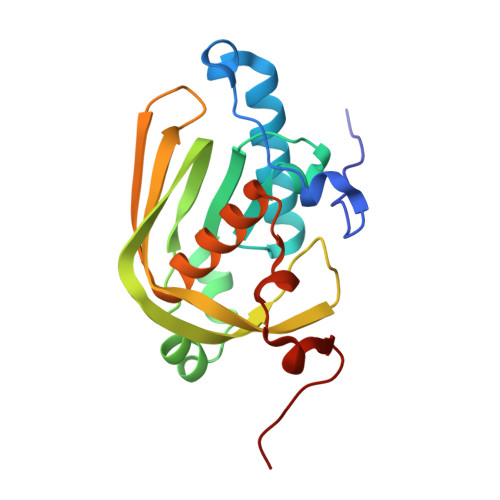Structure and activity of human mitochondrial peptide deformylase, a novel cancer target
Escobar-Alvarez, S., Goldgur, Y., Yang, G., Ouerfelli, O., Li, Y., Scheinberg, D.A.(2009) J Mol Biology 387: 1211-1228
- PubMed: 19236878
- DOI: https://doi.org/10.1016/j.jmb.2009.02.032
- Primary Citation of Related Structures:
3G5K, 3G5P - PubMed Abstract:
Peptide deformylase proteins (PDFs) participate in the N-terminal methionine excision pathway of newly synthesized peptides. We show that the human PDF (HsPDF) can deformylate its putative substrates derived from mitochondrial DNA-encoded proteins. The first structural model of a mammalian PDF (1.7 A), HsPDF, shows a dimer with conserved topology of the catalytic residues and fold as non-mammalian PDFs. The HsPDF C-terminus topology and the presence of a helical loop (H2 and H3), however, shape a characteristic active site entrance. The structure of HsPDF bound to the peptidomimetic inhibitor actinonin (1.7 A) identified the substrate-binding site. A defined S1' pocket, but no S2' or S3' substrate-binding pockets, exists. A conservation of PDF-actinonin interaction across PDFs was observed. Despite the lack of true S2' and S3' binding pockets, confirmed through peptide binding modeling, enzyme kinetics suggest a combined contribution from P2'and P3' positions of a formylated peptide substrate to turnover.
Organizational Affiliation:
Molecular Pharmacology and Chemistry Program, Sloan-Kettering Institute, 415 E. 68th Street Zuckerman Z1941, New York, NY 10065, USA.






















